Deep Sea Fishes – One Ten East Log
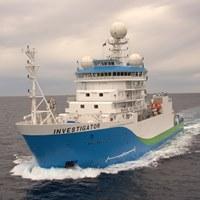
One Ten East Logs from the IIOE-2 voyage aboard RV Investigator will be posted on the WAMSI website during the month long voyage.
We are directly west of Fremantle and today have enjoyed very calm conditions with a beautiful long swell.
Log from One Ten East
The RV Investigator is currently undertaking oceanographic research along the 110°E meridian off Western Australia as part of the second International Indian Ocean Expedition. The voyage is led by Professor Lynnath Beckley of Murdoch University and the research is supported by a grant of sea time on RV Investigator from the CSIRO Marine National Facility.
|
Date: May 23, 2019 |
Time: 1200 AWST |
|
Latitude: 30.5°S |
Longitude: 110°E |
|
Wind direction: E |
Wind speed: 9.5 knots |
|
Swell direction: W |
Depth: 5392 m |
|
Air temperature: 19°C |
Sea temperature: 20°C |
|
Notes: The night samples at Station 6 were jam-packed with phyllosoma (rock lobster) larvae, which had the zooplankton scientists grinning from ear to ear. The whole ship’s complement is enjoying the lovely calm weather. |
|
Deep Sea Fishes
By Daniel Cohen and Dr M. Pilar Olivar
Deep-sea fishes reside at depths greater than 200 m beyond the effective influence of sunlight for most of the time. The mesopelagic zone (between 200–1000 m depths) is home to many diverse and bizarre fishes, such as dragonfishes, snaketooths, bristlemouths, hatchetfishes, lightfishes and lanternfishes. The early stages of these fishes develop in the epipelagic layer nearer to the surface, but juveniles and adults move down into the dark zone. Some families are characterized by performing diel vertical migrations through the water column (e.g., lanternfishes), while others (e.g., bristlemouths or hatchetfishes) remain in the dark part of the ocean all the time.
Species of the family Myctophidae (lanternfish) are the dominant migrating mesopelagic fishes, and they constitute the focus of our studies on this voyage. Adult myctophids are small (from 3 to 10 cm) and have some similarity in appearance to an anchovy, although being darker in color and characterized by the presence of small luminous organs on their bodies. Their larvae are small (from 2 to 15 mm) and transparent, similar to those of many other fish species. Myctophid larvae generally dominate plankton samples from the deep open ocean.
Worldwide, lanternfish comprise about 250 species and account for 65% of mesopelagic fish biomass. The name myctophid comes from the Greek word “mykter” meaning nose and “ophis” meaning serpent, while the common name lanternfish describes the array of light emitting organs called photophores that occur in species-specific patterns on their bodies.
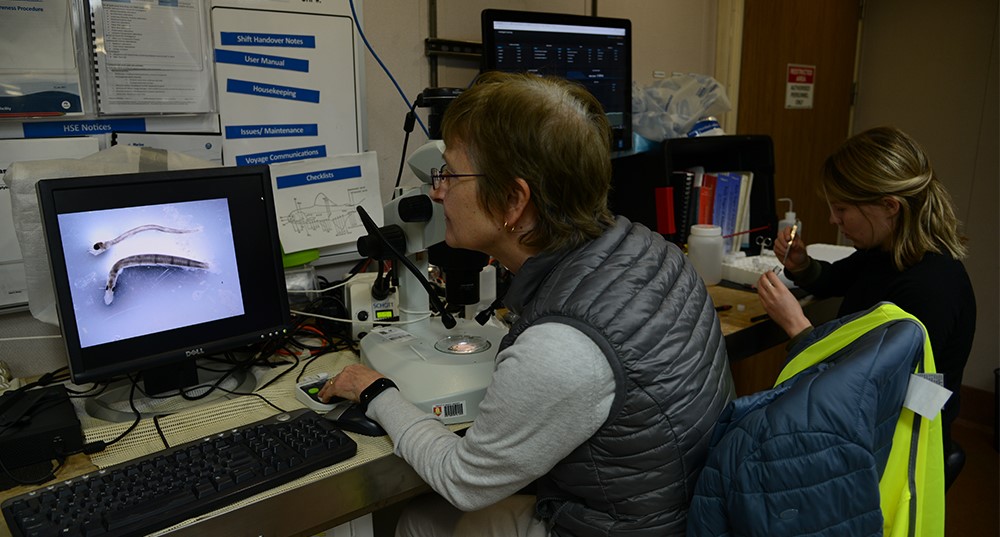 |
|
In a laboratory aboard RV Investigator Dr Pilar Olivar (Institute of Marine Science, Barcelona) identifies deep sea fishes using a dissecting microscope with a camera and image capture capability, while Danielle Hodgkinson (Murdoch University) carefully labels the samples before preservation. Photo: Micheline Jenner. |
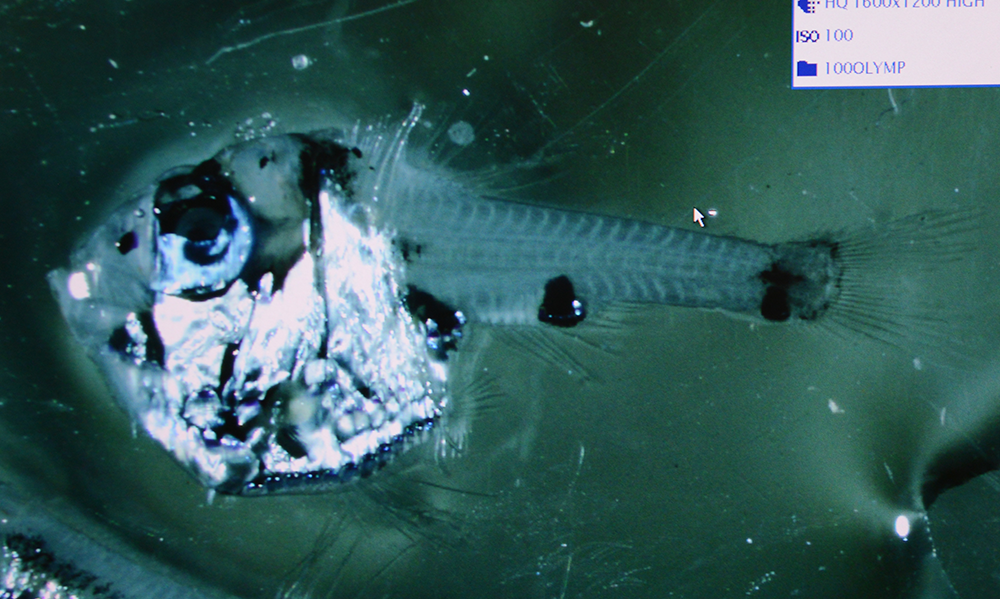 |
|
Hatchet fish are the most well-recognised of the deep sea fishes, with their large over-sized jaws, bulgy eye and silver jacket. Photo: Micheline Jenner. |
Living in the light-limited mesopelagic zone means little access to prey. Myctophids deal with this problem by performing diel vertical migration, being the movement up into the plankton rich surface waters at night to feed, before returning to the safety of the deep during the day. In this way, myctophids occupy an important position in the oceanic food web transporting organic matter vertically through their migrations and providing food for larger predatory species.
Despite their importance, relatively little is known about myctophids in the south-east Indian Ocean and this is largely due to the difficulty in sampling deep-sea fishes. Fortunately, thanks to their diel vertical migration at night, when they are feeding near the surface, these fishes can be captured using large nets towed from research vessels. Additionally, the presence of their larval stages nearer to the surface allows sampling by means of standard plankton nets, and an indirect way of studying species distribution, abundance and diversity. Lanternfishes, through their abundance, play a vital role in the health and functioning of the ocean, particularly because they are prey for commercially important species such as tuna, mackerel and squid and ecologically significant species such as seabirds and whales.
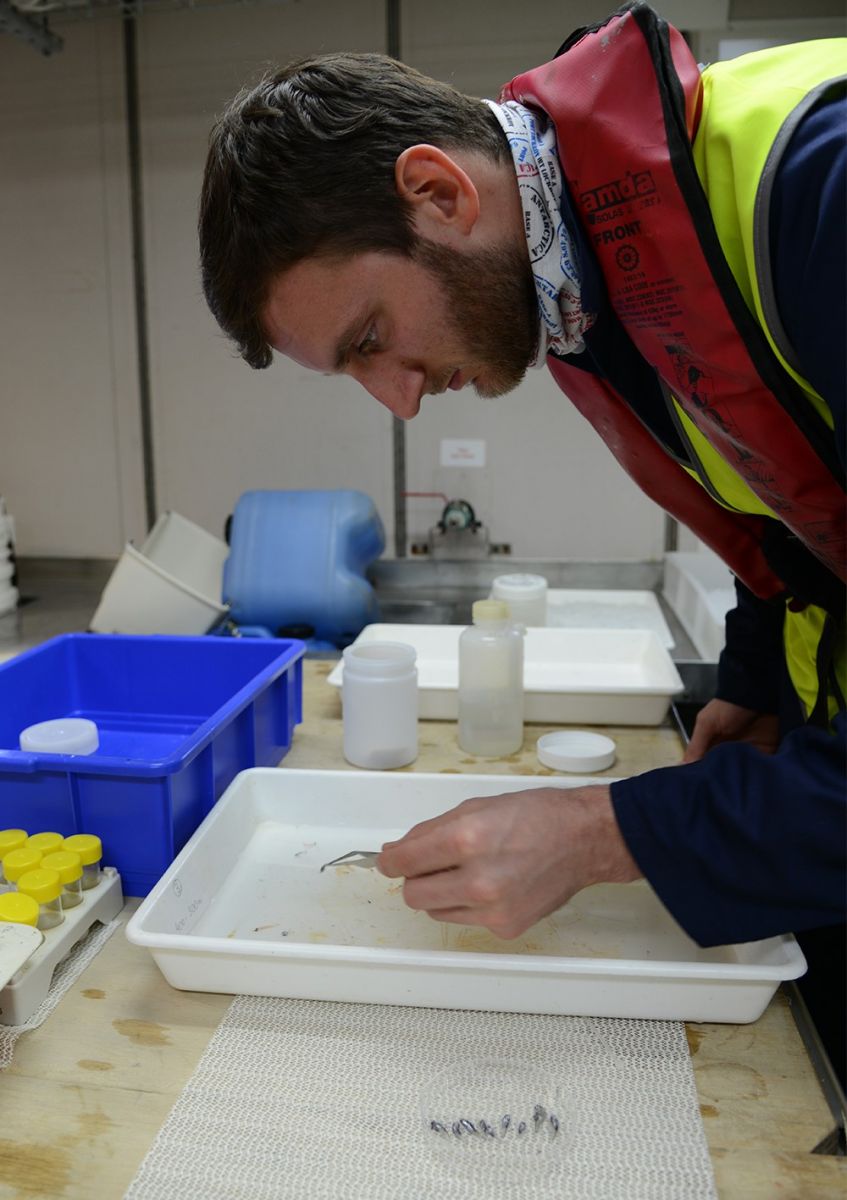 |
|
Daniel Cohen (Murdoch University Honours Student) sorts myctophid fishes from the depth-stratified EZ net tows. Photo: Micheline Jenner. |
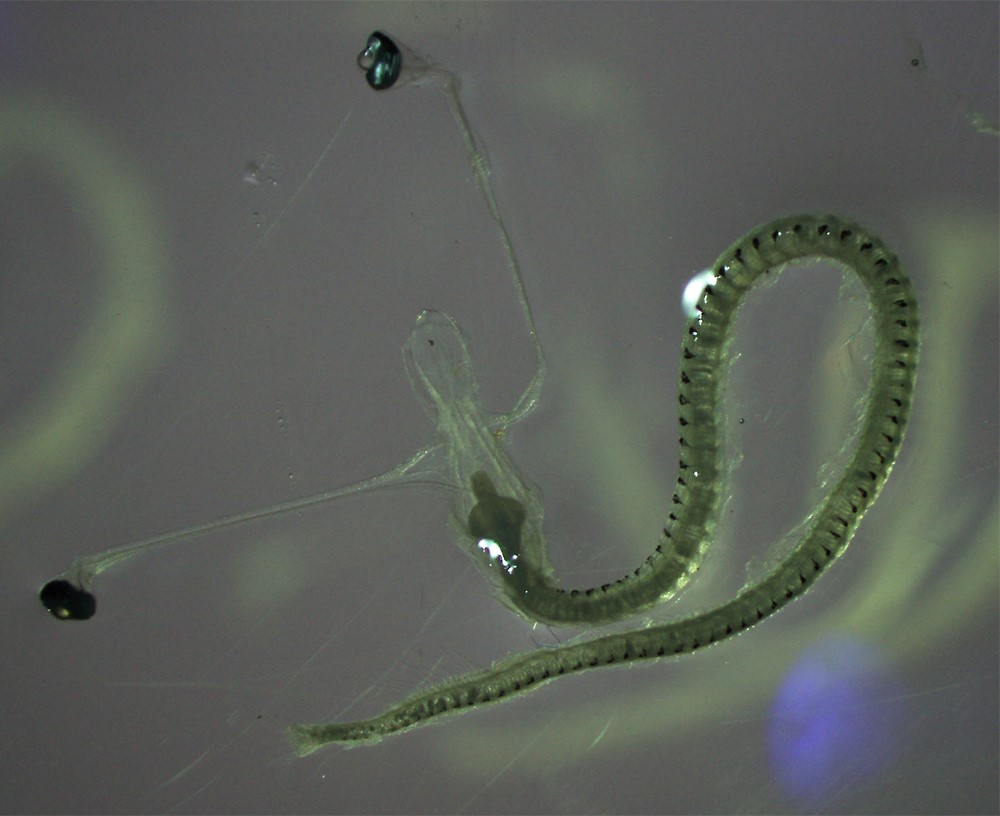 |
|
Larvae of some deep sea fishes bear little resemblance to the adults. Here, an Idiacanthus fasiola larva has “eyes on stalks”, whilst the adult is more normal in appreance! Photo: Dr Pilar Olivar. |
Be sure to follow our daily Log from One Ten East at https://iioe-2.incois.gov.in or www.wamsi.org.au.

